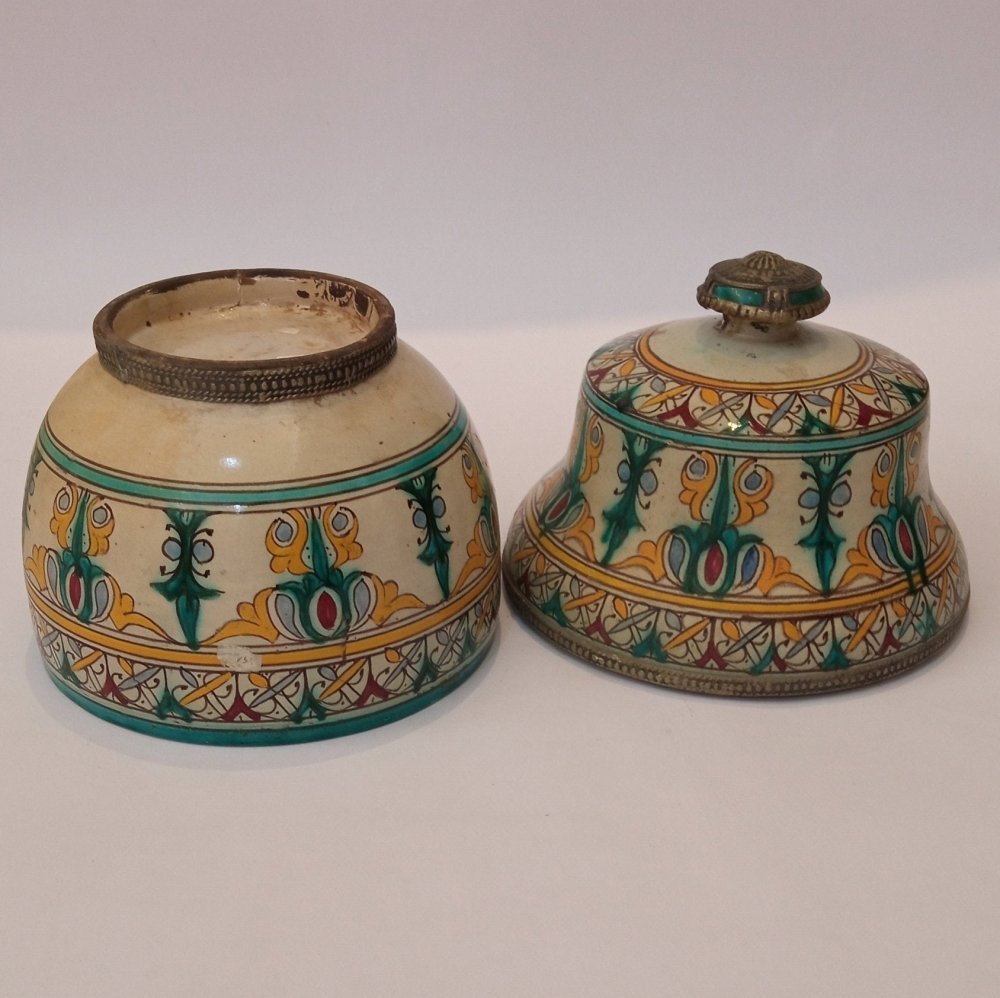
Moroccan Pottery (Ceramic) - Exploring the Rich History and Artistry
MOROCCAN POTTERY (CERAMIC)
Moroccan ceramics have a long and rich history, dating back to ancient times.
The production of ceramics in Morocco has been influenced by a variety of cultural and historical factors, including the country's location at the crossroads of Africa, Europe, and the Middle East.
One of the most well-known centers of Moroccan ceramic production is the city of Fez, which has been a hub of craftsmanship for centuries.
Fez has a long history of producing ceramics using traditional techniques, including hand-throwing on a pottery wheel and hand-painting with natural dyes.
In addition to traditional ceramics, Moroccan artisans also produce modern ceramics that incorporate more modern techniques and materials.
Many Moroccan ceramics are known for their vibrant colors and intricate patterns, which are often inspired by traditional Moroccan motifs and designs.
Today, Moroccan ceramics are popular both within Morocco and around the world, and are often used as decorative elements in homes and other spaces.
**There are many types of Moroccan pottery, each with its own unique style and characteristics. Some of the most popular types of Moroccan pottery include:
Tiles:
Moroccan tiles, also known as "ZELLIJ," are known for their intricate geometric patterns and are often used to decorate walls, floors, and other surfaces.
Plates:
Moroccan plates are often hand-painted with intricate patterns and are used for serving food or as decorative elements.
Bowls:
Moroccan bowls come in a variety of sizes and shapes and are often used for serving food or as decorative elements.
Vases:
Moroccan vases are known for their bold patterns and are often used to hold flowers or other decorative items.
Jugs:
Moroccan jugs, also known as "tagines," are used for serving water or other beverages and are often adorned with intricate patterns.
These are just a few examples of the many types of Moroccan pottery that are popular around the world.
There are many traditional techniques used to make pottery in Morocco, and the specific process used can vary depending on the type of pottery being made and the region in which it is being produced.
Here is a general overview of the process of making pottery in Morocco:
Preparing the clay:
The first step in making pottery is to prepare the clay. This typically involves mixing the clay with water to create a malleable consistency and removing any impurities or debris.
Shaping the pottery:
Once the clay is prepared, it can be shaped into the desired form using a variety of techniques, including hand-throwing on a pottery wheel, hand-molding, or using a mold.
Drying the pottery:
After the pottery has been shaped, it must be allowed to dry completely before it can be fired. This process can take anywhere from a few days to several weeks, depending on the size and thickness of the pottery.
Firing the pottery:
Once the pottery is completely dry, it is ready to be fired. In Morocco, pottery is typically fired in a kiln using wood, coal, or natural gas as fuel. The firing process helps to harden the pottery and give it its final form.
Glazing and decorating the pottery:
After the pottery has been fired, it can be glazed and decorated using a variety of techniques. This may include hand-painting with glazes or enamels, or applying decorative decals or transfers.
Final firing:
Once the pottery has been glazed and decorated, it is fired again to set the glaze and ensure that it is durable.
This is a general overview of the process of making pottery in Morocco. The specific techniques used can vary depending on the type of pottery being made and the region in which it is being produced.
YOU MIGHT ALSO LIKE TO discover:
5 AMAZING (BOHO MOROCCAN JEWELRY) PIECES FOR YOUR WEDDING: Free GUIDE
FEEL THE DIFFERENCE:10 SIDE COFFEE TABLES YOU'LL LOVE, 100% GUARANTEED
SEW YOUR DREAMS: A DETAILED HOW-TO ON MAKING A MOROCCAN WEDDING KAFTAN











1 comment
SDGwetg awtwet erqatywer